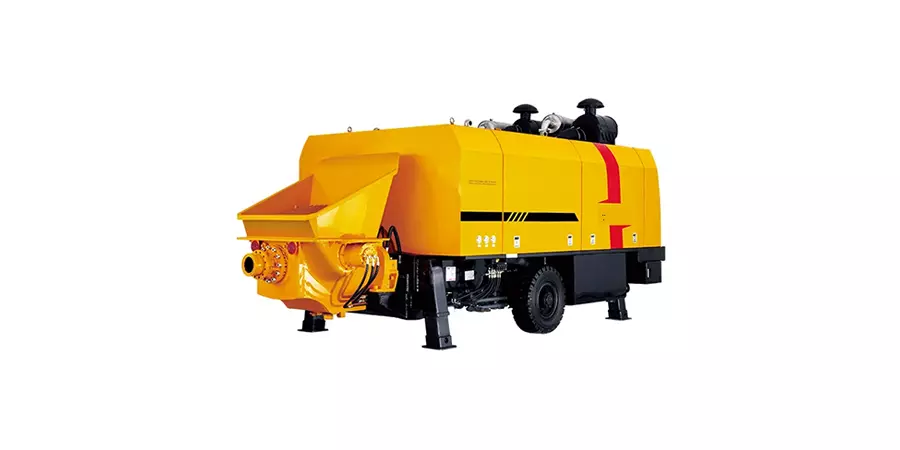Markets

Hydraulic Products Used in Trailer Trucks
Trailer trucks (semi-trailers, flatbeds, dump trailers, etc.) rely on hydraulic systems for lifting, stabilization, braking, and auxiliary operations. Below is a detailed breakdown of key hydraulic components and their applications:
1. Hydraulic Lifting Systems
Dump Bed Hydraulic Cylinders:
Pressure: 15–25 MPa.
Stroke: 1–3 meters (depending on trailer size).
Function: Tilt the trailer bed to unload materials (e.g., gravel, sand).
Specifications:
Design: Telescopic or single-stage double-acting cylinders (e.g., Parker Hannifin or Enerpac).
Tailgate Lifters:
Function: Raise/lower rear gates for loading/unloading.
Components: Compact hydraulic cylinders with integrated valves.
2. Hydraulic Suspension Systems
Air/Hydraulic Hybrid Suspension:
Hydraulic leveling valves.
Accumulators to absorb road shocks.
Function: Stabilize heavy loads and adjust trailer height.
Components:
Applications: Tankers, refrigerated trailers, and lowboy trailers.
3. Hydraulic Braking Systems
Retarder Brakes:
Function: Auxiliary braking for downhill control (common in mountainous regions).
Type: Hydraulic retarders (e.g., Voith or Telma) dissipate heat via fluid friction.
Emergency/Parking Brakes:
Hydraulic actuators engage brakes if air systems fail.
4. Hydraulic Landing Gear
Function: Raise/lower the trailer when detached from the tractor.
Hydraulic Jacks: Manual or electric pump-driven (e.g., Jost landing gear).
Gearbox Motors: For automated lifting (pressure: 10–15 MPa).
Components:
5. Hydraulic Stabilizers and Outriggers
Function: Prevent trailer movement during loading/unloading.
Vertical hydraulic cylinders with manual or remote control.
Common in car carriers and heavy equipment trailers.
Design:
6. Hydraulic Power Take-Off (PTO) Systems
Function: Transfer power from the truck engine to hydraulic pumps.
PTO Pump (e.g., Eaton or Muncie).
Control Valves: Proportional valves for precise flow adjustment.
Drive dump bed cylinders.
Operate auxiliary equipment (e.g., cranes, augers).
Applications:
Components:
7. Hydraulic Ramps and Loading Systems
Tilt/Rolling Ramps:
Hydraulic cylinders (stroke: 2–4 meters).
Synchronized valve blocks for smooth operation.
Function: Load heavy machinery (e.g., excavators) onto flatbeds.
Components:
8. Refrigeration Units (Hydraulic-Driven)
Function: Power cooling systems in refrigerated trailers.
Hydraulic motors (e.g., Danfoss or Sauer-Danfoss) drive compressors.
Pressure: 10–20 MPa.
Components:
Key Components and Brands
| Component | Leading Brands | Key Features |
|---|---|---|
| Cylinders | Parker, Enerpac | Telescopic design, corrosion-resistant coatings. |
| PTO Pumps | Eaton, Muncie | High efficiency, 25+ MPa pressure. |
| Control Valves | HydraForce, Bosch Rexroth | Load-sensing, integrated relief valves. |
| Hydraulic Hoses | Gates, Continental | Steel-braided, abrasion-resistant. |
Maintenance Best Practices
Fluid Quality: Use ISO VG 46/68 hydraulic oil with regular contamination checks (NAS 10–12 cleanliness).
Leak Prevention: Inspect hoses and seals monthly (common failure points).
Filter Replacement: Change filters every 500–1,000 hours (ΔP ≥0.5 bar).
Technological Trends
Electro-Hydraulic Integration:
Proportional valves + PLCs for automated load leveling.
Smart Diagnostics:
IoT sensors monitor pressure/temperature in real time.
Lightweight Components:
Aluminum cylinders and composite hoses reduce trailer weight.
Common Failures & Solutions
Cylinder Drift: Caused by worn seals → Replace seals and check fluid contamination.
Overheating: Clogged filters or low fluid → Clean/replace filters and top up oil.
Summary
Trailer trucks leverage hydraulic systems for critical functions like dumping, stabilization, braking, and loading. Key components include cylinders, PTO pumps, valves, and hoses, with brands like Parker and Eaton dominating the market. Regular maintenance and advancements in electro-hydraulic controls ensure reliability and efficiency in logistics and heavy transport.
